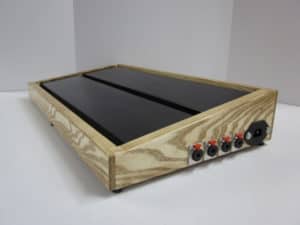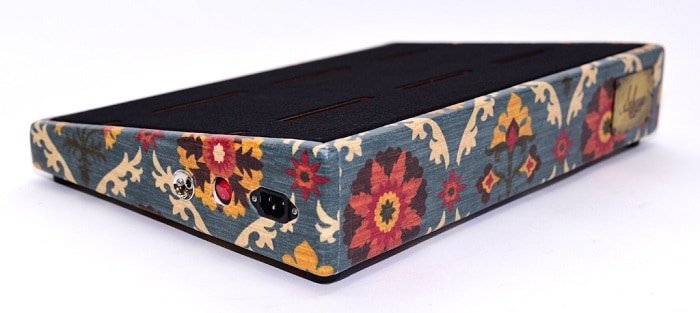 When effects pedals first appeared, they gave guitar players a whole new dimension of tone.
When effects pedals first appeared, they gave guitar players a whole new dimension of tone.
Over the years technology has advanced to a point where you can create just about any kind of tone you can think of. Being in such a high demand meant that a lot of manufacturers were competing to saturate the market.
These days there thousands of different guitar pedals you can buy. On average, a guitar effects setup will have anywhere from 5 to 10 pedals. Quickly enough pedal boards have appeared to offer an efficient way to keep all of your pedals in one place.
The issue with pedal boards is that they are often pretty expensive if you want to get the good stuff. They don’t always accommodate for every pedal design and shape out there, and are sometimes limiting in terms of what sort of equipment you can install on them.
Another way to solve the issue is to make a pedal board of your own. Best pedal board plans are the ones which rely on simplicity. Today we are going to talk about the most important factors to consider when creating a pedal board from scratch.
The Basics
The foundation of every good pedal board is the material you use to make it. When choosing what you want your pedal board to be made of, it is good to keep in mind what it has to endure.
Since you are going to be stepping on it, sometimes even with the full weight of your body, you need to choose either thick wood or metal.
Materials
Wood is definitely easier to work with and source. You can construct the whole board out of wood for cheap. The only thing you need to pay attention to is the thickness of your elements and how you will join the pieces together.
If you decide to use something like plywood, you will need to use thicker gauge. On the other hand, if it’s solid wood, you have a bit more leeway to work with. Remember, the pedal board needs to sustain the weight and force you exert on it without falling apart. In terms of joints, we suggest you use screws or bolts. Glue can be problematic unless you craft overlapping joints.
Making a pedal board out of metal is definitely more expensive and harder to do. You will need at least a good drill and angle grinder if you want your pedal board to be remotely well made.
Design
The design of the pedal board largely depends on your own requirements. If you have numerous pedals, you will probably need a longer board. One thing remains the same though, you will want the pedal board to be sitting a decent distance above the floor, and you will also want the top panel to be angled slightly towards you.
 The height of the pedal board will allow you to route cables underneath the top panel, and install a pedal board power supply out of the way. The slight angle makes it easier to use the pedals, as you can rest your heel on the ground. This way your balance is still intact, and you have both feet on the ground.
The height of the pedal board will allow you to route cables underneath the top panel, and install a pedal board power supply out of the way. The slight angle makes it easier to use the pedals, as you can rest your heel on the ground. This way your balance is still intact, and you have both feet on the ground.
Other things to consider
Since you need to mount your pedals on the board somehow, it’s best to use patches of Velcro tape, or something similar. If you are using Velcro, you will need to remove the rubber pads from the bottom of your pedals. There are also some sticky tapes you can use, but they wear out rather quickly over time. Velcro is still the easiest solution. If that’s not something you want to do, you can always devise more complex mounting solutions.
In closing
Building your own pedal board is a great DIY project. You can design it in a way that accommodates all of your requirements, and chances are you will spend less money than you would by purchasing a commercial one.
If you don’t feel like designing your own, you can always use existing pedal board plans. There’s an abundance of them online. Just remember to use good materials and to be patient when building the pedal board. If you do everything right, your new pedal board will last you a lifetime.
